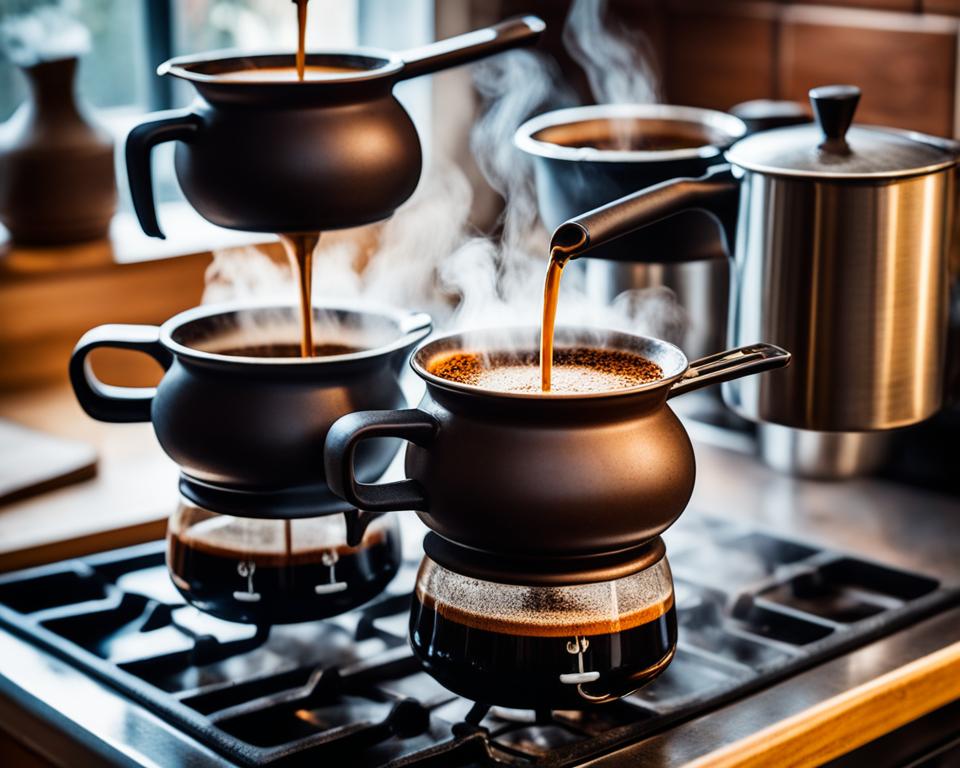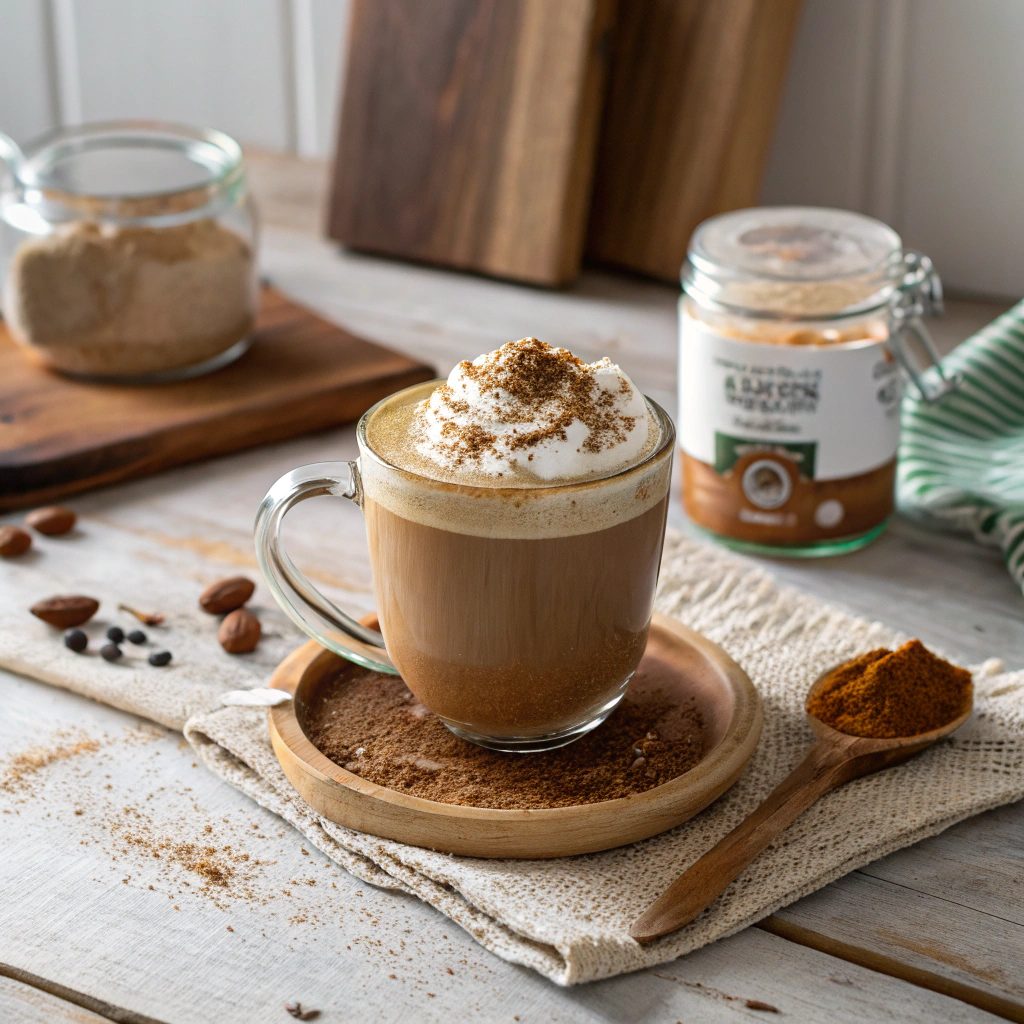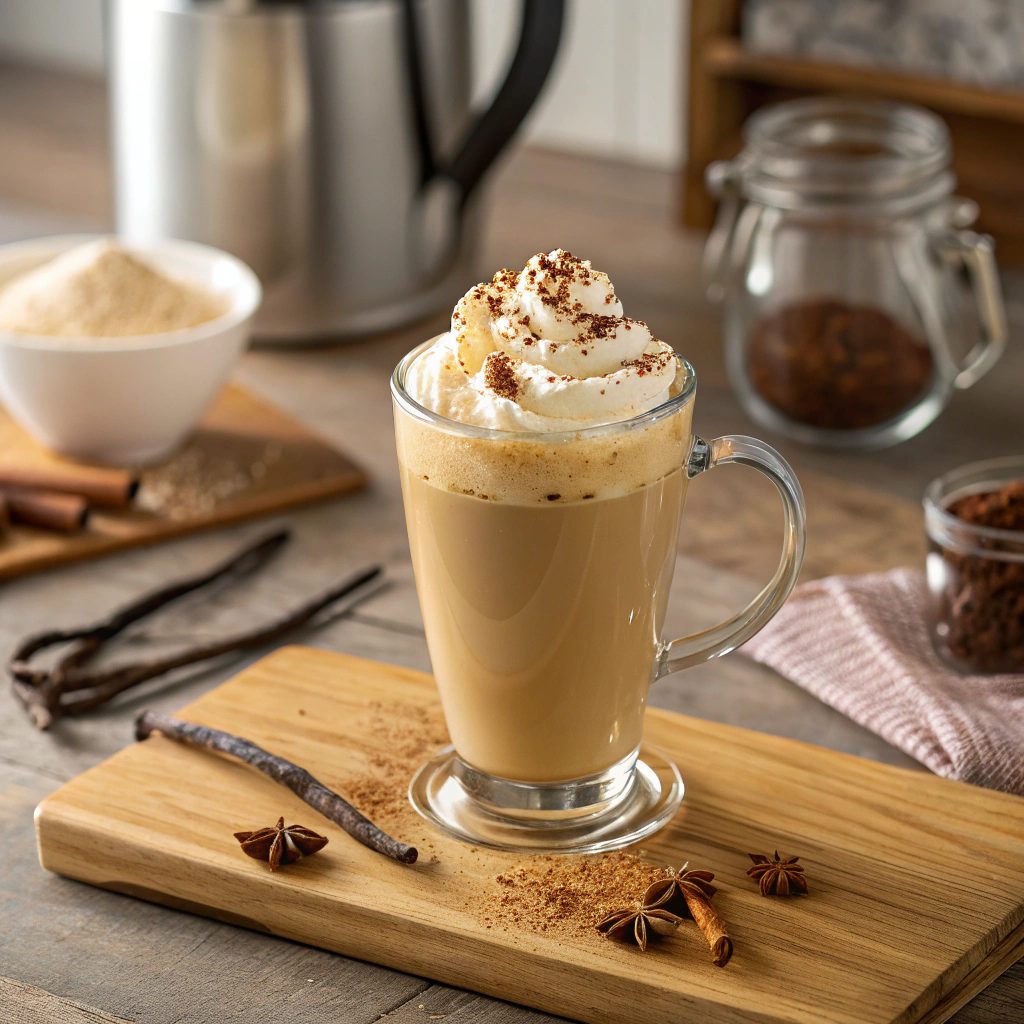Have you ever wondered what makes Cuban coffee so irresistibly rich and sweet? The first time I sipped that velvety Cuban espresso, I knew I had to recreate it at home.
The simplicity of the Cuban coffee recipe makes it approachable for any coffee lover eager to try something new. Whether you’re a seasoned barista or a novice brewing enthusiast, learning how to make Cuban coffee is both exciting and rewarding—interested yet?
Introduction to Cuban Coffee
The allure of Cuban coffee, or Café Cubano, lies in its bold flavors and rich history. Known for its distinctive, unique brewing method, Cuban coffee has become a hallmark of Cuban culture.
But what sets this coffee apart from others, and why has it become a beloved beverage beyond the borders of Cuba?

What Makes Cuban Coffee Unique?
The secret to the unmistakable taste of this coffee lies in its unique brewing method. This involves mixing strong espresso with sugar as it brews, creating a signature froth known as “espuma.” The result?
A cup that’s stronger, sweeter, and profoundly rich—a true embodiment of the robust Cuban coffee characteristics.
In Cuba, coffee isn’t just a drink; it’s a ritual. From the streets of Havana to family kitchens, Cuban coffee culture is evident everywhere.
Experiencing this coffee goes beyond tasting; it’s about savouring every moment and every sip shared with friends and family.
The History Behind Café Cubano
The history of Café Cubano dates back to the early 18th century, when coffee was first introduced to Cuba. Over time, the locals perfected their brewing techniques, resulting in the unique beverage we know today.
It’s said that the tradition of adding sugar during brewing was developed as a way to mask the bitterness of strong coffee.
It is more than just a drink; it reflects Cuba’s vibrant history and social practices. Whether served in a small cup to visitors or bought from a roadside vendor, Cuban coffee holds a special place in the hearts of the Cuban people.
It’s an integral part of their social fabric, embodying hospitality and camaraderie.
Essential Ingredients for Café Cubano
Creating an authentic recipe starts with choosing the right components. In my experience, using traditional and high-quality ingredients ensures the best results.
Traditional Cuban Coffee Beans
The base of any great Cuban café is the coffee itself. I always opt for rich, dark-roasted Cuban coffee beans. These beans are usually roasted to perfection, offering a robust and smoky flavour that’s unmatched.
Using these authentic ingredients gives the coffee its deep, bold essence and makes a significant difference in the final taste.
Sugar and Its Role in Café Cubano
Sweetening the coffee isn’t just about making it taste good; it’s a vital part of the Café Cubano experience. Cuban sugar, especially demerara or other raw sugars, is what I prefer for its characteristic sweetness and rich flavour.
This type of sugar also plays a crucial role in creating the sweet espuma, that delightful foam that sits atop a well-made café.

Adding sugar at the right moment, I find, not only sweetens the coffee but also helps create the coveted sweet espuma. This fluff of foam isn’t just visually appealing—it’s a signature part of the Café Cubano experience, making every sip a true delight.
How to Brew the Perfect Cuban Coffee
Brewing Cuban coffee is an art form that transforms simple ingredients into a rich and flavorful experience. The following step-by-step recipe will guide you on how to create an authentic espresso at home.
By the end, you’ll also know how to make espuma, the signature frothy top.
To start, gather your essentials: fresh Cuban coffee beans, a Moka pot, and sugar. The Moka pot, a traditional espresso maker, is crucial for brewing Cuban coffee.
But don’t worry if you don’t have one; a modern espresso machine can also work.
- Measure Coffee and Water: Start by filling the bottom chamber of your Moka pot with water up to the safety valve. Add ground Cuban coffee to the filter basket, leveling it off without packing it tight.
- Assemble and Heat: Screw the top and bottom parts of the Moka pot together. Place it on medium heat and wait for the magic to happen. As the water heats, it will pass through the coffee grounds, collecting those rich flavors.
- Create Espuma: While the coffee brews, place a few teaspoons of sugar in a cup. The trick to making authentic Cuban espresso lies in the espuma. As soon as the first few drops of coffee emerge, mix them with the sugar until it becomes frothy.
- Combine and Serve: Once the coffee is fully brewed, pour it into the cup over the sugar mixture, stirring to combine. This creates a rich, sweet, and frothy Cuban coffee.
Mastering how to make espuma is the hallmark of brewing Cuban coffee. This frothy layer sets it apart from other espresso varieties, adding both texture and sweetness.
Using the right tools and technique ensures a perfect brew every time. Now, you’ve got a step-by-step recipe to make delicious Cuban espresso, complete with its signature espuma.
Tips and Tricks
Creating an authentic Café Cubano at home can feel like art. Let’s walk through the essential tips to ensure your brew is perfect and true to Cuban roots. Starting with the right equipment is key.
Getting the Right Equipment
Investing in the proper Café Cubano equipment is crucial. A Moka pot is a must-have for brewing Cuban coffee. These pots, which originated in Italy, are beloved for their ability to produce rich, concentrated coffee.
If a Moka pot isn’t available, a stovetop espresso maker can be a decent alternative, but remember that a proper Moka pot will give you the most authentic flavor.
Aside from the Moka pot, you’ll need a sturdy spoon for stirring and a small metal pitcher for mixing the foam. Both of these tools play a significant role in perfecting the espuma technique, which adds the iconic foam topping to your Café Cubano.
Perfecting the Espuma
The espuma technique is what sets Café Cubano apart. To create this signature foam, start by setting aside the first few drops of coffee from the Moka pot. These initial drops are the most potent and are perfect for the espuma.
Add a spoonful of sugar to the coffee and whip vigorously until the mixture becomes a light, frothy foam. Applying pressure is crucial here; don’t be shy.
The better you whip, the richer and thicker the foam will be, delivering that authentic Cuban coffee experience.
To truly perfect your Café Cubano, consider the timing of adding the sugar. Many enthusiasts suggest waiting until the coffee has just begun to percolate, allowing for a more integrated and flavorful espuma.
These authentic Cuban coffee tips will guide you in tweaking the process to match your taste preference while maintaining the traditional essence.
Serving and Enjoying Your Cuban Coffee
Enjoying a shot of Cuban espresso isn’t just about the flavor; it’s a cultural experience. Cuban coffee-serving traditions play a crucial role in social gatherings.
Let’s explore how to share and savor your Cuban coffee like a true local.

Cuban Coffee
Ingredients
Method
- Prepare the Moka Pot: Fill the bottom chamber of your Moka pot with water up to the safety valve. Add ground Cuban coffee to the filter basket, leveling it off without packing it tight.
- Assemble and Heat: Screw the top and bottom parts of the Moka pot together. Place it on medium heat.
- Create Espuma: As soon as the first few drops of coffee emerge, pour them into a cup with the sugar. Whip vigorously until the mixture becomes a frothy foam.
- Brew the Coffee: Continue heating the Moka pot until all the coffee is brewed and collected in the top chamber.
- Combine and serve: Pour the brewed coffee over the espuma, stirring gently to combine. Serve in small, demitasse cups.
Notes
Cultural Traditions and Serving Styles
This coffee is typically served in small, demitasse cups, also known as “tacitas.” Sharing a shot of Cuban espresso is an act of hospitality and friendship. These little cups pack a powerful punch, bringing people together for conversations, laughter, and connection.
One of the most cherished coffee-serving traditions is the “colada,” a larger brew of Cuban espresso meant for sharing. You might often see a colada served with several shots to enjoy with friends and family. This communal aspect embodies the Cuban spirit of togetherness.
When considering how to enjoy Cuban coffee, timing and pace are key. Sipping slowly, you can revel in the robust flavors while engaging in “sobremesa,” a leisurely table talk after a meal.
This practice highlights the importance of enjoying the moment and deepening relationships.
Can I Use the Cuban Coffee Recipe to Create a Caribbean Coffee Experience?
Indulging in a caribbean coffee recipe for tropical bliss can elevate your coffee experience. By incorporating rich spices, coconut milk, and a hint of vanilla, you can transport your taste buds to sun-soaked beaches. This delightful twist on classic Cuban coffee captures the essence of the tropics in every sip.
Conclusion
My journey through the rich world of Cuban coffee has been nothing short of enchanting. Experiencing the art of making homemade café Cubano is like bringing a piece of Cuban tradition into your own home. From selecting the perfect beans to mastering the espuma, every step offers a deeper connection to this cherished cultural practice.
Experiment, and don’t be afraid to make it your own. Remember, the joy of the Cuban coffee experience lies not just in the final cup but also in the process itself. Each brew gives you another chance to perfect your technique and experiment with flavors. Isn’t that exciting?
At the end of the day, making and savoring a Café Cubano can significantly enrich your daily routine. It’s more than just a beverage; it fosters connections, invites relaxation, and even offers a moment of escape.
So, why not revel in this delightful Cuban tradition? Start brewing and let your home’s atmosphere transform with the aroma of authentic Cuban coffee.
FAQ
What makes Cuban coffee unique?
Cuban coffee, or Café Cubano, stands out due to its distinctive brewing method and use of sugar. There’s a special technique for creating a rich, sweet foam called ‘espuma’ that tops the coffee, resulting in a strong and sweet flavor that’s hard to match.
What are the essential ingredients for making authentic Café Cubano?
To make an authentic recipe, you need traditional Cuban dark roast coffee beans and sugar, preferably demerara or other raw sugars, to achieve the signature sweet espuma.
How do I brew the perfect Cuban coffee?
Brewing the perfect coffee involves a few key steps: using a Moka pot to brew the coffee, and then whipping sugar with a bit of the coffee to create the espuma. Pour the rest of the coffee over the espuma to mix it all together.
Can I make Cuban coffee with modern kitchen tools?
Yes, while a Moka pot is traditional, you can also use other espresso makers. The key is in the technique—especially in the preparation of the espuma, which gives Café Cubano its unique flavor and texture.
What tips can help me make an authentic Café Cubano?
Equip yourself with the right tools, like a Moka pot, and practice your technique for making espuma. Timing when you add the sugar and whipping it properly are essential steps. Personalize your process to suit your taste while keeping the essence of Café Cubano.
How should I serve and enjoy my Cuban coffee?
It is traditionally served in small cups and enjoyed in the company of friends or family. It’s often part of social gatherings and hospitality, making it less about the drink itself and more about the shared experience and conversation that follow.
What is the cultural significance of Cuban coffee?
This coffee is more than a beverage; it’s an integral part of Cuban culture. It’s celebrated for its role in social interactions, hospitality, and everyday life in Cuba. Enjoying this coffee often involves sharing and savoring the moment with others, embodying the spirit of community and tradition.
Can I experiment with my Cuban coffee recipe?
Absolutely! While there are traditional methods and ingredients, don’t hesitate to experiment. Making Cuban coffee at home can be an exciting journey of trial and error, and each cup can offer a new experience. Enjoy the process and find what works best for your taste.




